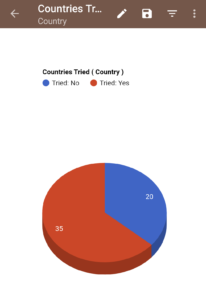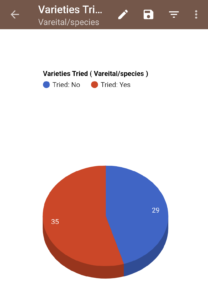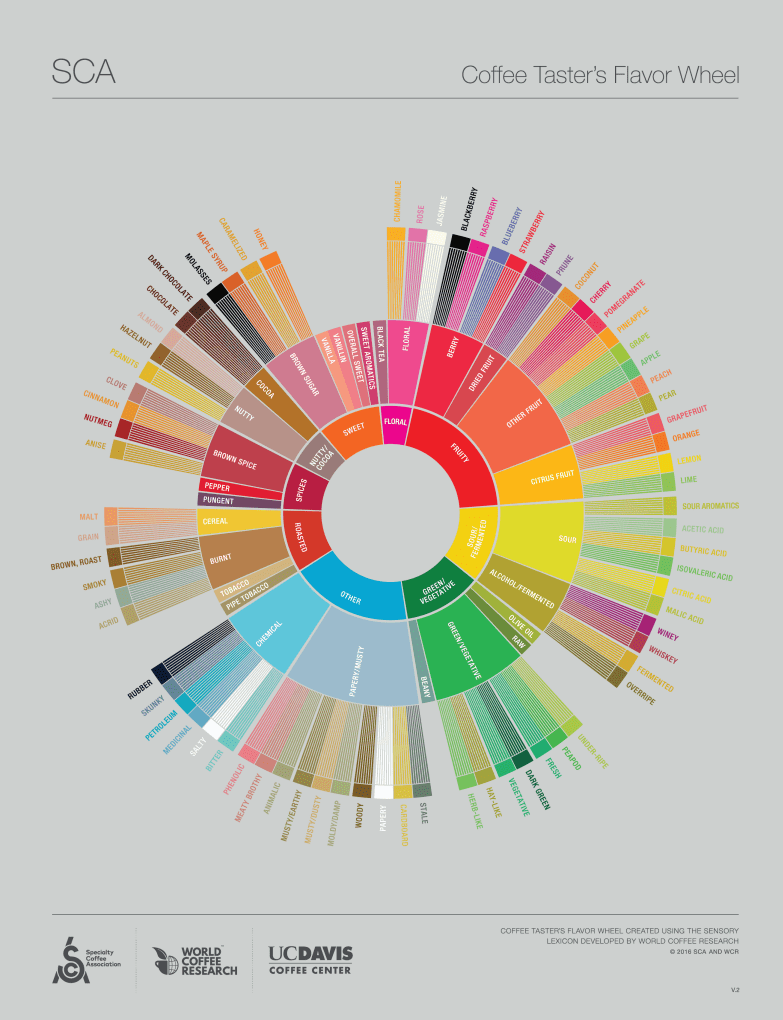Best Coffee Beans - Six Purchasing Tips
The Best Coffee Beans are found with these 6 Purchasing Tips. It is the most fun part, and if you want to drink better coffee, you first have to buy better coffee.
Understanding these six tips will help you find the Best Coffee Beans.
Tip #1: For the Best Coffee Beans – Avoid Blends
The first thing to understand is the difference between Blends, Commodity Coffee, Single Origins, and Specialty Coffee.
Blends are designed to be consistent, and in achieving that, they sacrifice extraordinary. In the same way, the average is always lower than the maximum in maths.
Best Coffee Beans – TLDNR links
Tip #1: Avoid Blends
Tip #2: Farmers and farms
Tip #3: Varieties
Tip #4: Processing
Tip #5: Country
Tip #6: Roasters
Where do I buy coffee?
How to save money on coffee
The best way to save money on coffee is to make it yourself. A cup you have made can be 1/5th of the cost of buying a cup of coffee. You can buy higher-quality coffee and invest more time perfecting each cup.
When making it yourself, great coffee is not necessarily expensive and can work out to around $1 per cup. Compare that to great wine, whisky, or anything else – although coffee is too cheap in fact, listen to 2) Slavery, Suffering, and Affordable Luxury • A History of Coffee (spotify.com)
Being a coffee explorer is excellent fun. I’m on a journey to try:
| 1. coffee from every producing country |  |
| 2. every variety |  |
| 3. seek great producers |
I use a few Memento databases on my phone to help me keep track (more on Memento later). In doing this, I’ve had some beautiful experiences and learnings that I would not have otherwise discovered.

I score my coffee in Memento.
My scores are
- below 50, tip out
- 50-60, ok
- 60-70 is good, but not enough to buy again
- 70-80, very good, would buy again
- 80-90, excellent, love it
- 90-100, wow, mind-blowing
You can see from the graph blends are almost always 60-70. There are exceptions to every rule; a couple of blends made 70-80, but that’s 1% of blends I’ve tried that achieved this, and they were unusual blends.
- Atomic Roaster, seasonal blend, Fruit Punch Guji x Sidama. This is a blend of two Ethiopian Landraces varieties of specialty coffees. The seed size is relatively uniform, minimizing issues in the blend. This is as close as possible to a Single Origin/specialty coffee while being a blend. It’s barely a blend. This was excellent; I scored it 85, purchased it several times, and kept an eye out in case it’s back in season.
- Hammerstone Coffee, Bedrock Blend. The roaster, Logan Collinge, is well aware of issues with blends and has gone to great lengths to minimize them. Starting with high-quality specialty components – no cheap bulk fillers. Roasting components separately and post-roast blending. Roasting each so that the end density is as similar as possible. Keeping bean size consistent. I scored 75. Although I would repurchase and recommend it, I’m just not looking for that consistency. I crave wow and excellent coffee, not just very good.
Because of how I store my coffee, single-dosed and frozen when I find wow and excellent coffee, I buy lots of it. That way, I spend much of the year drinking fabulous coffee I love.
Issues with blends:
- They are often bulked out with cheap commodity coffee
- The components have different densities, and each requires different extractions to be optimal, which is impossible.
Now, this might upset most roasters.
You will never find a wow coffee in a blend; you are unlikely to find anything excellent, and even very good is a stretch. This is why I avoid blends.
I acknowledge people have different requirements. Some people want to find a blend they like and drink that forever.
I think many people find the whole dialing-in process annoying – using the fixed recipe method, it can take most of the bag before you get it acceptable. In addition, if you use the fixed recipe method, you will find the varying roast levels a challenge, resulting in sour under-extractions for light roasts and bitter over-extractions for dark roasts. So, sticking to a tried and trusted blend works out better for them.
But using Density Assisted Extractions resolves these issues. I think blend drinkers are missing out on how varied and excellent coffee can be.
I also think most people are oblivious to how extraordinary coffee can be. Almost all cafes here in New Zealand serve a generic blend. Most consumers have no idea of what special coffee could taste like.
Although people like to poke fun at people who take coffee too seriously, the SCA Coffee Tasters Flavor Wheel is no joke. You will never taste much of this in a generic blend, and yes, the grinder is very important (more on that later).
What is Specialty Coffee
‘Specialty coffee’ refers to coffee graded 80 points or above on a 100-point scale by a certified coffee taster (SCAA) or a licensed Q Grader(CQI).
Specialty-grade coffee is the prime pick of the world’s coffee stock – it comprises approx. 3-5% of the global yield of coffee.
Specialty Coffee- The Q Grade Score Sheet
Score | Grade | Specialty Yes/No |
90-100 | Outstanding | Yes |
85- 89.99 | Excellent | Yes |
80- 84.99 | Very Good | Yes |
Below 80 | No Grading | No |
- Green coffee is graded based on visual inspection and cupping after being roasted. Visual inspection involves taking a 350g sample of green coffee beans and counting defective beans; defects can be Primary (e.g., black beans, sour beans) or Secondary (e.g., broken beans).
- Coffee qualifies as a ‘specialty’ when it has zero Primary defects and less than five Secondary defects. Cupping is a process that involves roasting the coffee and simply brewing it by adding hot water to the ground beans; specific scores for each of the attributes such as acidity, body, flavor, and aroma- are assigned by certified Q graders.
- Specialty coffee is a term used to refer to coffee that has scored over 80 points on a 100-point scale by the SCA (Speciality Coffee Association).
- Simpler definition: Specialty-grade coffee represents those coffees at the top tier of coffee bean quality evaluation. This evaluation allows for a maximum of 5 defective beans in a 350-gram sample and considers other factors, such as bean size, taste notes, and moisture content. It is estimated that no more than 5% of green coffees in the U.S. market make specialty-grade status.
Competition Coffee – Cup of Excellence (COE)
You can use this information in several ways. It can help you find great Farms, Farmers, Variety, and Processes.
For finding COE-winning coffee in New Zealand, there is only one vendor – COFFEE TECH – Specialty Coffee Roasters (coffee-tech.co.nz), and you can spend insane sums of money. Currently, the most expensive is nearly $2000 for 200g of roasted, BOP 2020 GN-01 GEISHA BLACK JAGUAR NATURAL LIMITED – D427 – COFFEE TECH – Specialty Coffee Roasters (coffee-tech.co.nz). Sure, it scored 94.5, but it is three years old!
But you can find vendors of COE-winning farms overseas that will ship to New Zealand. I’ve used Cypher Urban Roastery several times.
Here is an example: 500g (get more to pay less on shipping, single dose, and freeze it!). NZD 75 + shipping, not unobtanium.
SANTA ROSA – Cypher Urban Roastery (bycypher.com)
El Guatalon is located at Belen Village, Santa Rosa de Lima, Santa Rosa, 35 km from Guatemala City. It has a total area of 50 hectares, 10 of which produce coffee, and the rest possess a natural forest reserve of pine, cypress, and other varieties.
With over 60 years in coffee production, the Juarez family is currently in its fourth generation of coffee growers and has continued its legacy of producing one of the best coffees in the region.
“El Guatalon” comes from the term “guatal,” a word in some Central American countries that refers to a piece of land where cattle graze after the corn harvest.
Guatalon achieved the rank of 14th in COE Guatemala 2023.
Do your homework, and you can find great stuff.
Guatemala 2023 – Alliance For Coffee Excellence
Nicaragua 2023 – Alliance For Coffee Excellence
Costa Rica 2023 – Alliance For Coffee Excellence
El Salvador 2023 – Alliance For Coffee Excellence
Honduras 2023 – Alliance For Coffee Excellence
Mexico 2023 – Alliance For Coffee Excellence
Brazil 2022 – Alliance For Coffee Excellence
Brazil Naturals 2018 – Alliance For Coffee Excellence
Brazil Pulped Naturals 2018 – Alliance For Coffee Excellence
Bolivia 2009 – Alliance For Coffee Excellence
Burundi 2019 – Alliance For Coffee Excellence
Colombia 2022 – Alliance For Coffee Excellence
Ecuador 2022 – Alliance For Coffee Excellence
Ethiopia 2022 – Alliance For Coffee Excellence
Indonesia 2022 – Alliance For Coffee Excellence
Rwanda 2018 – Alliance For Coffee Excellence
Peru 2022 – Alliance For Coffee Excellence
So, do I only buy COE award-winning coffees? No, hardly ever.
Although there are an estimated 25 million smallholder coffee producers worldwide, farmers often don’t market their coffee.
Why don’t more producers market their coffee? – Perfect Daily Grind
Most smallholders do not enter the competitions; the cost is prohibitive, and the chances of winning are slim. It becomes more of a marketing exercise for those who can afford it. There is plenty of great coffee to be had without paying over the top for COE winners
What is Single Origin Coffee
Single-origin meaning is often simplified to coffee sourced from one single producer, crop, or region in one country. Single farm and single estate mean that the coffee is sourced from one farm, mill, or co-operative. Some coffee labels tell you the estate name, the specific lot or paddock the coffee was grown on, or if it’s a micro-lot (a particular varietal or processing method from a specific farm).
Everything You Need to Know About Single Origin Coffees – Perfect Daily Grind
You can see from the Single Origin vs. Blend graph that a Single Origin can be worse than a blend. The variation in scores is much more significant. Purchasing randomly can be bad, so how do I improve my odds?
Tip #2: For the Best Coffee Beans – study the Farmers and Farms.
Careful attention to how coffee is grown, selectively picked, and processed is essential. Some farmers are doing everything possible to produce the best they can—research who is winning the Cup of Excellence and seek them out.
Look for Roasters who sell coffees that speak to the farmer’s care and attention.
For example, a delicious coffee that I have purchased from several different vendors:
Peru Margarita Pongo Washed
Margarita has been producing coffee for over 15 years. She was able to access a farm where she could grow some agricultural products for her family and gain an income. In 2007, she started cultivating her first crops of Caturra and Bourbon. Her farm, El Mispero, is located in the village of Coipa at 1700 m.a.s.l.
This micro-lot [special care] bourbon [great variety] is harvested following strict ripeness criteria [selectively picked], later floated, and hand-sorted to remove any defects. Cherries were exposed to 30 hours of underwater fermentation before being pulped. The parchment was gently washed and dried under temperature-controlled conditions until ideal moisture content was achieved. Margarita has been producing coffee for over 15 years. Her farm, El Mispero, is located in the village of Coipa at 1700 m.a.s.l. [high altitude, better coffee].
The same coffee is often available at several roasters in NZ.
Peru Margarita Pongo Washed | Society Coffee NZ
Margarita Pongo – Peru – WASHED – Flight Coffee
Peru Margarita Pongo – Filter Roast – Vanguard Specialty Coffee Co (vanguardcoffee.co.nz)
Margarita Pongo, Peru – Grey Roasting Co
PERU Margarita Pongo – Washed | Excelso Coffee NZ
A great variety that is poorly picked and processed will not be perfect.
More examples of great Farms:
Panama Esplendorosa Estate
Costa Rici Don Carlos
El Salvador Los Naranjos Café
Colombia Rigoberto Herrera Café Granja La Esperanza
Guatemala El Gutalon
Brazil Santa Lucia
Tip #3: For the Best Coffee Beans – Learn about varieties
Rust-resistant varieties have not been chosen for taste. Pay attention to the variety.
Suitable varieties include Gesha, SL28, Sudan Rune, Kenya AA, Yellow Catuai, Ethiopian Landraces, Yemenia, Bourbon, Pacamara, Marcaturra, Ethiosar, and Caturra.
Look at what varieties are winning COE competitions in each country. Different countries grow different varieties.
Not so good: Robusta, Catimor & Castillo have robusta in their genetics. Typically taste of spices, green & hay.
Maragopipe & Pacamara are giant beans that require massive fertilizer inputs to do well. They need an excellent grower to perform.
Tip #4: For the Best Coffee Beans – learn Processing methods
Natural
Washed
Washed, Natural, Honey: Coffee Processing 101 – Perfect Daily Grind
Figure out what you like. I think washed was only developed to cope with growing coffee in countries that can’t do good naturals. Washed removes fruit flavors that should be there. But I’m biased. Fermentation is underutilized and holds great potential, as it does with wine & cheese; listen to Lucia Solis.
Tip #5: For the Best Coffee Beans – learn about each Country
First, you need to know there is a lot of misleading marketing around terroir.
Top Coffee Producing Countries – WorldAtlas
Find out what has gone on in countries:
Guatemala has good specialty coffee but not-so-good varieties.
Nicaragua lost coffee skills due to war.
Honduras lost coffee skills.
Tip #6: For the Best Coffee Beans – Study the Roasters
Everyone thought the roaster was the bee’s knees and the coffee didn’t matter; the roaster made the magic. Now we know better. Roasters are people too; they have preferences: some roast dark, some roast light, some roast quick, some roast slow, and some try to make the best of each bean. They have different gear: drum, air, hybrid, and infrared. The same beans are going to go to several roasters. Some vendors don’t even have a roaster and are just marketers. Keep track of what you like and why.
Where to buy the Best Coffee Beans in NZ
I buy most of my coffee online.
Some NZ roasters who provide information on the producers, variety, and processing:
Excelso
Some international roasters
I don’t always buy within my country (NZ); some producers or varieties I like are only available overseas.
I do have all the NZ roasters websites in the country favorited. I open the lot and scan for my favorite producers and varieties, seeking out those I want to knock off my to-do lists or prioritize lists.
Coffee is a seasonal product, so every year is a new experience.
Because I single dose and freeze all my coffees to maintain freshness for over a year, I buy lots of it when I do find something I like.
Then I can drink a different coffee each day of the week, and they are all ones I love.
